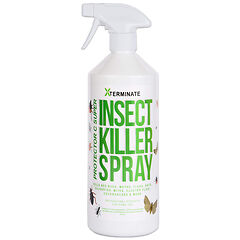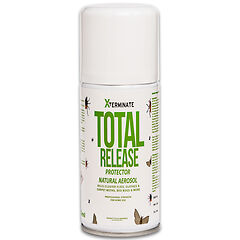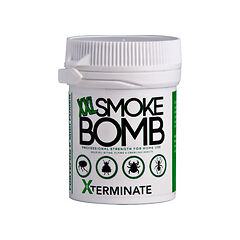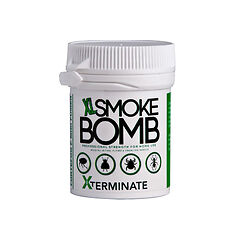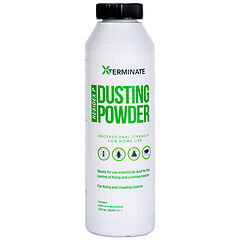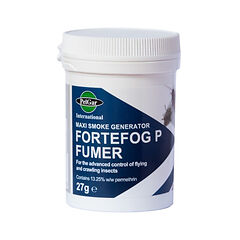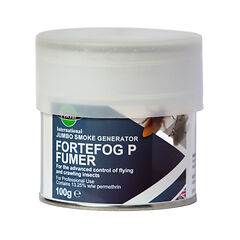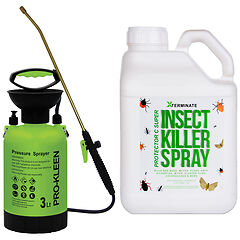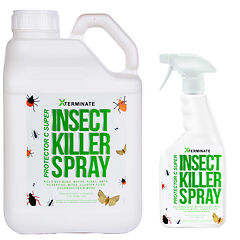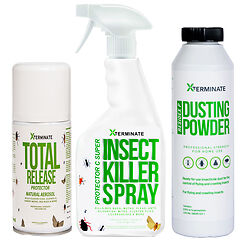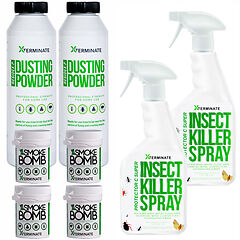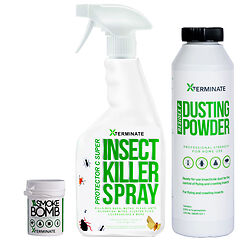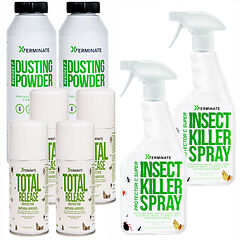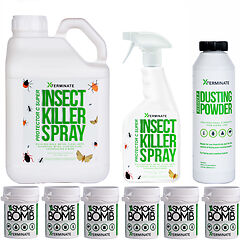Fleas
Fleas are infamous for attacking household pets, but they can make life miserable for humans, too! We've got the professional-quality flea killing products and the expert advice to help you take your life back from these bloodsucking pests.
Getting Rid of Fleas
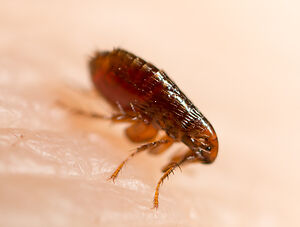 Fleas are incredibly common pests that can infest any home, no matter how clean it is. These bloodsucking parasites are usually found in the fur of pets but can also infest furniture, carpets, and wardrobes. Fleas breed very quickly making them tough to get rid of, but with the right products and some expert advice, it’s possible to take your life back from these bloodthirsty pests!
Fleas are incredibly common pests that can infest any home, no matter how clean it is. These bloodsucking parasites are usually found in the fur of pets but can also infest furniture, carpets, and wardrobes. Fleas breed very quickly making them tough to get rid of, but with the right products and some expert advice, it’s possible to take your life back from these bloodthirsty pests!
Identifying Fleas
Fleas are often confused with bed bugs, another bloodsucking pest. The two can look quite similar unless you look closely. While both of these pests feed on the blood of their hosts, they’re actually quite different, and they require some different treatment methods. Properly identifying fleas will help you get rid of them much more easily – here are the warning signs to look out for.
Itchy Pets
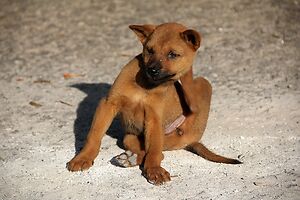 You probably know that fleas are much more common in homes with cats and dogs. They hop onto animals and hide in their fur, where they’ll feed and lay eggs. Their bites cause an itchy allergic reaction on the skin, meaning your pet will start to scratch themselves much more than usual. Unlike bed bugs, fleas will live on their hosts, so if you notice your pets itching a lot, comb through their fur and see if you can spot any fleas.
You probably know that fleas are much more common in homes with cats and dogs. They hop onto animals and hide in their fur, where they’ll feed and lay eggs. Their bites cause an itchy allergic reaction on the skin, meaning your pet will start to scratch themselves much more than usual. Unlike bed bugs, fleas will live on their hosts, so if you notice your pets itching a lot, comb through their fur and see if you can spot any fleas.
Appearance
Adult fleas are small, brown creatures with thin bodies. After a meal, they’ll swell up with blood and may have a slight reddish tint to them.
Like most insects, fleas have several stages to their life cycle and all of these stages look slightly different. The first stage is the egg. Flea eggs are tiny white specks that look like grains of sand. They’re hard to spot among the other bits of dust that might be in your pet’s fur (or wherever else it is the fleas have infested), so you probably won’t see them unless you’re looking for them.
The next stage is the larval stage. During this stage, the fleas actually look like tiny, bristly caterpillars with transparent bodies. The larvae will feed on dead skin cells, flea droppings, hair, and any other bits of organic debris they can find as they grow. They can even eat their own shed skins! Eventually, when they’re ready to transform into adults, the larvae will spin themselves into a silk cocoon. The amount of time this takes depends on the weather – in hot conditions, they might only spend a few days as a caterpillar. In cooler conditions, this stage can last for over 6 months!
After 5-14 days inside their cocoons, the adult fleas will emerge.
Dirty Carpets
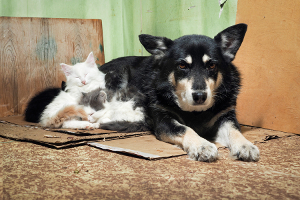 While fleas much prefer to live in the fur of an animal, they don’t spend their whole lives there. Most fleas actually start life on the floor and won’t hop onto a host until they reach adulthood. This is because flea eggs aren’t sticky and will usually fall out of an animal’s fur before they hatch. In the case of severe infestations, the hatched eggs, shed skins, droppings, and other debris can cause your carpets to look unusually dirty. If you don’t have a pet to tip you off, this is something you should look out for if you suspect you have a flea problem.
While fleas much prefer to live in the fur of an animal, they don’t spend their whole lives there. Most fleas actually start life on the floor and won’t hop onto a host until they reach adulthood. This is because flea eggs aren’t sticky and will usually fall out of an animal’s fur before they hatch. In the case of severe infestations, the hatched eggs, shed skins, droppings, and other debris can cause your carpets to look unusually dirty. If you don’t have a pet to tip you off, this is something you should look out for if you suspect you have a flea problem.
Jumping Movement
One of the most well-known facts about fleas is that they’re great at jumping! This is another big difference between them and bed bugs. If you see something that jumps around very quickly, you’re looking at a flea. Bed bugs are slow and don’t jump.
Bites on Your Leg
Fleas prefer animals, but they’re not picky and will happily feed on people if they have to! Their bites look similar to mosquito bites. They’re small, round, red bites that might be slightly raised. They’re most common around the ankles and lower legs – as we don’t have thick fur for the pests to hide in, they’ll instead hop on and off our legs to feed. While fleas are impressive jumpers, the highest they can reach is ankle-height, so you’ll find most of the bites are concentrated around this area.
Types of Flea
.jpg) There are many different species of flea – the most common are dog fleas, cat fleas, and human fleas. Despite their names, all of these species can feed on virtually any mammal, so you might find cat fleas on dogs and vice versa. It’s very hard to tell the difference between them unless you have a microscope, and the methods for getting rid of them are the same, so don’t worry about getting a specific treatment for a specific breed of flea.
There are many different species of flea – the most common are dog fleas, cat fleas, and human fleas. Despite their names, all of these species can feed on virtually any mammal, so you might find cat fleas on dogs and vice versa. It’s very hard to tell the difference between them unless you have a microscope, and the methods for getting rid of them are the same, so don’t worry about getting a specific treatment for a specific breed of flea.
Can I Catch Fleas If I Don’t Have Pets?
Yes! While fleas are much more common in pet-owning homes for obvious reasons, they can appear in homes without pets, too. They can be brought in on your socks after a walk through some long grass, or by rats and other wildlife.
You can make it harder for the pests by regularly cleaning and vacuuming your carpets. This will dramatically slow the rate at which they can breed, and it may even be enough to prevent a potential home infestation entirely.
Getting Rid of Fleas on Your Pets
If you have pets, getting rid of fleas is a two-step procedure. First, you should use a flea shampoo or a pet-friendly spray to remove them from your pet’s fur. If possible, you should do this in a bathtub as it’ll stop the pests from hopping away into your carpets, where they’ll live to bite another day.
This is only half the battle, though. Remember that you’ll only find adult fleas on your pet – chances are there’ll still be dozens of eggs and larvae lurking in your carpet. Once they reach adulthood, you’ll be back to square one again!
Getting Rid of Fleas from Your Home
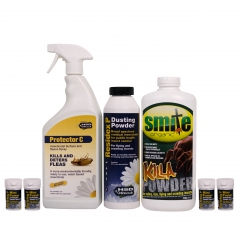 The second step involves getting rid of all the fleas from your home to ensure the infestation doesn’t return. This means that you need some professional-quality pest control products to get the job done right. You should use several different products to give yourself several methods of attack against these persistent pests to get rid of the adult fleas, their larvae, and their eggs!
The second step involves getting rid of all the fleas from your home to ensure the infestation doesn’t return. This means that you need some professional-quality pest control products to get the job done right. You should use several different products to give yourself several methods of attack against these persistent pests to get rid of the adult fleas, their larvae, and their eggs!
Dusting Powder and Surface Sprays
Fleas can’t fly or climb walls, so coating your floor in our powerful insecticide sprays and powders is a really effective approach. Use a combination of both for best results – powder is good for sensitive areas, while a spray is useful for absorbent carpets.
Smoke Bombs
Fleas aren’t really good at slipping into cracks and crevices like bed bugs are, so you may not need a smoke bomb unless the infestation is really bad – surface treatments should be effective enough. However, if you have a really severe flea problem in your home, it might not be practical to rely solely on surface treatments. Our smoke bombs carry a fast-dispersing insecticidal smoke into every corner of a room which is the fastest way to thin out large numbers of fleas. When used alongside surface treatments and Biopren sprays, it can completely clear out a room very quickly!
Re-Treating Affected Areas
No matter what products you use, it’s highly likely you’ll be left with a few surviving fleas. This is normal, and it’s why professional pest controllers will always re-treat any affected area a few days after the initial treatment. This will help you mop up any remaining pests and prevent the infestation from returning to full strength.
Preventing Fleas from Returning
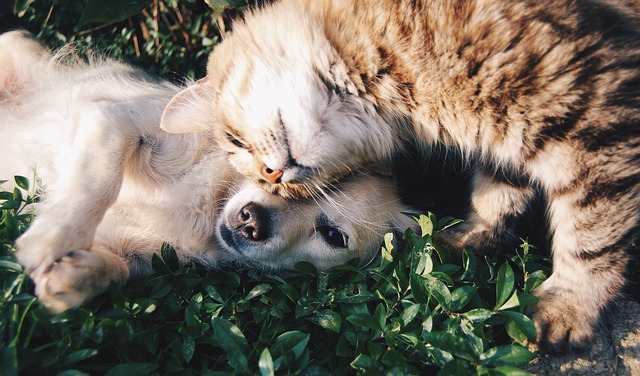 When it comes to fleas, prevention is much, much easier than the cure. Getting flea collars or spot-on treatments for your pets is a must. You should also regularly wash your pet’s bedding to make sure you get rid of any eggs that might be hidden away in there.
When it comes to fleas, prevention is much, much easier than the cure. Getting flea collars or spot-on treatments for your pets is a must. You should also regularly wash your pet’s bedding to make sure you get rid of any eggs that might be hidden away in there.
If you don’t have any pets, it’s a simple matter of hygiene. Regularly vacuum your carpets and clean your bedding to ensure that fleas don’t get a chance to breed in your home. You should also check for signs of rats, who will commonly carry fleas into your home. Keep your garden as tidy as possible to make it less appealing to both fleas and the rats that carry them - fleas like to lurk in long, unkept grass where there's a lot of food for their young. By keeping your garden well-maintained and clear of rubbish, you'll dramatically reduce your risk of fleas!



